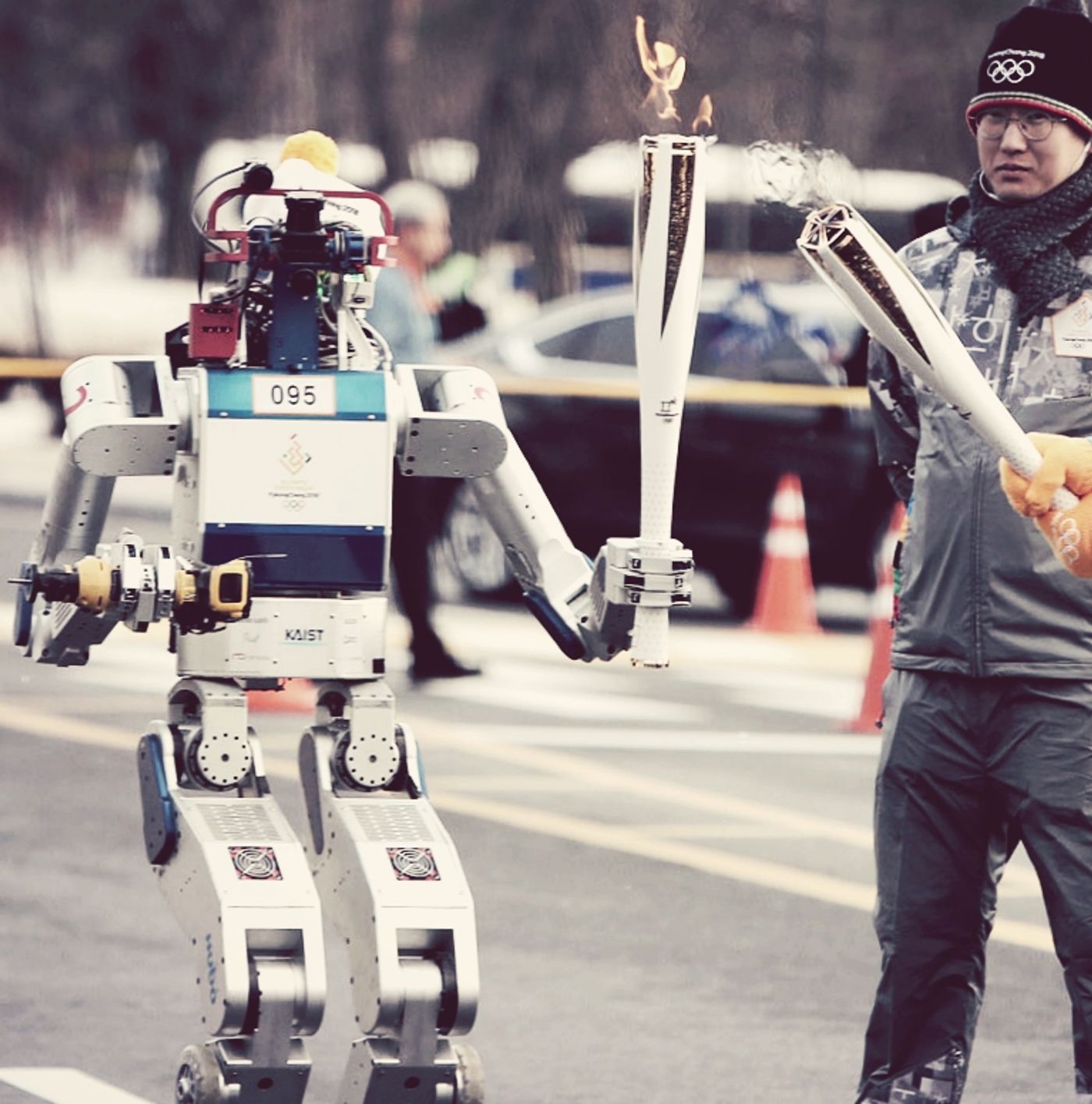Watch: Robots Ready to Shine at Olympic Games
Attendants of the 2018 Winter Games in South Korea will get to see not only incredible athletic performances but feats of robotic excellence as well. The South Korean government invested the equivalent of about $1.5 million in eight companies to sponsor the development of 80 robots specifically for the games. The marvelous machines have been in the works since 2016 and if all goes as planned, they will clean, swim, ski, paint, serve drinks and converse with the public during the Olympics.
Jun-ho Oh, director of the Institute for Robotics at the Korea Advanced Institute of Science and Technology (KAIST), was in charge of helping government officials manage the robotic endeavors for the games. “I have more anxiety than excitement,” he tells IEEE Spectrum, adding that mostly, he “hope[s] people will like them.”
One goal is to have functioning robots in place to give directions and fulfill drink orders. Others will sweep floors at a rate of 900 square meters (~2953 square feet) per hour. Swimming robots, designed to look like goldfish, will entertain guests by moving in schools and formations at depths of up to 2 meters (~6.6 feet).
These complex devices have to be able to navigate their environments safely. The cleaning bots will find their way back to their charging stations after their shift with the help of cameras and lidar – the use of a pulse of light to measure the distance between objects, similarly to how radar uses electromagnetic waves and sonar uses sounds waves. Lidar is also implemented in some types of self-driving cars. The goldfish use depth and pressure sensors to move together safely and if one becomes lost or displaced from the group, it can be guided back with a radio antenna.
Oh says he has three rules for safe and desirable robots: they must not cause problems or trouble, must be useful and must do something new. The 10 skiing robots who have been working on slope trials for several months may not be utilitarian, but they are certainly novel. They were designed by various universities and companies to race on a 200-meter (~656-foot) course and have been teaching themselves how to ski through the gates.
Other visually intriguing bots will include a mechanical version of a white tiger named Soohorang, who is the mascot of the 2018 Winter Games, and a big dot-matric printer that will paint murals of the previous days’ big sporting moments.
And, last but not least, in December 2017, on day 41 of the PyeongChang 2018 Winter Olympic torch relay, the event’s first nonhuman participant, Robot HUBO, was the second torchbearer at KAIST in Daejeon. HUBO drove Robotics Professor Dennis Hong in a short leg of the torch journey before carrying the torch itself. It then demonstrated its disaster rescue skills – for which it was designed by Oh and his colleagues at KAIST – by cutting through a wall. HUBO finished his performance by lighting the torch of his creator, Oh, who was waiting on the other side of the wall. After Oh, a walking robot called FX-2, which a human rides in and controls -- in this case a lucky student -- had a turn carrying the torch.
The 2018 Winter Olympics begin Feb. 9. It’s going to be a big day for athletes, trainers, fans, robotics designers, bots, and all of the numerous heavily invested governments and companies, as well.









